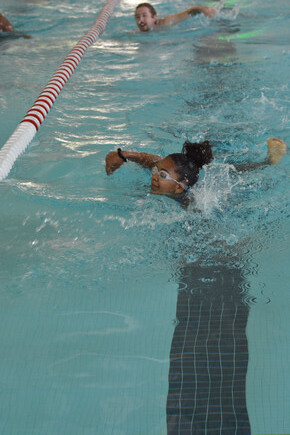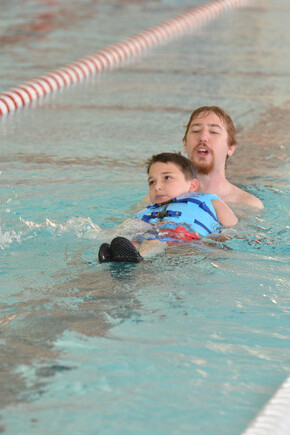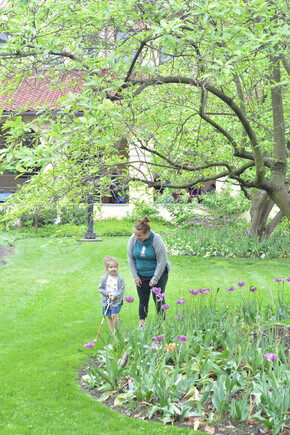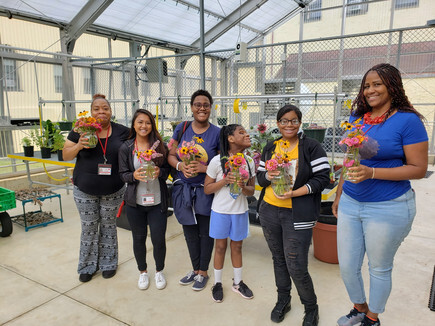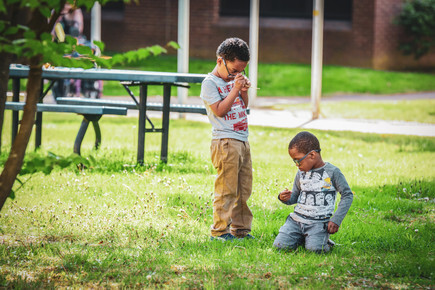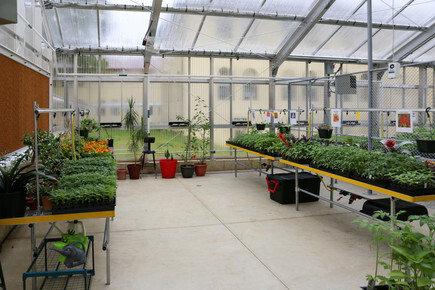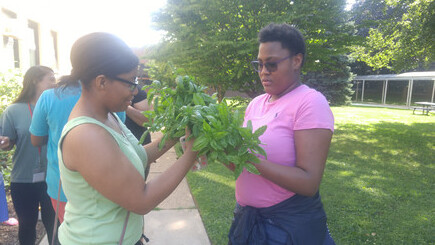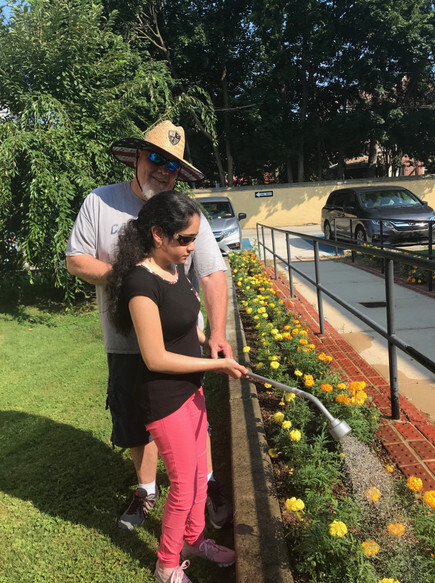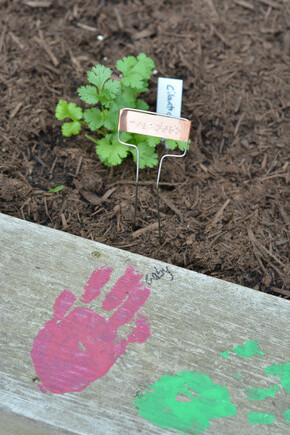The Kappen Aquatic Center
Starting in 2008, OSB looked to both preserve the historic features of its campus and incorporate 21st Century innovation, when possible, with new construction. This balance first came into focus with the opening of the Kappen Aquatic Center.

Designed to use over 40% less energy than a conventional natatorium, OSB's 25,000 square-foot Kappen Aquatic Center opened its doors in 2009 as the first-ever LEED Platinum certified natatorium in North America. Much of the Kappen Aquatic Center's energy savings has been achieved through features such as a well-insulated building envelope, energy-efficient lighting elements and a mechanical dehumidification system that employs hot gas heat recovery. The dehumidifier, for instance, provides approximately 100,000 gallons of condensate to the Kappen Aquatic Center's pools annually and free pool water heating.
Additionally, the Kappen Aquatic Center's building automation system uses software and a demand-control system to maintain optimum energy efficiency year-round. The Kappen Aquatic Center's design also incorporates water-saving fixtures like a cistern that captures and purifies all of the run-off from the pool so that, when possible, water is retained, treated and reused, minimizing waste. Sustainability measures were also factored into the selection of building materials as OSB and its vendors for the project placed a priority on local, recycled and low-Volatile Organic Compound (VOC) materials. In addition to its LEED Platinum designation, the Kappen Aquatic Center also received the "Dream Design" award in 2013 from Aquatics International.
LED Lighting
OSB's next energy-efficiency project took the form of a collaboration between Overbrook School for the Blind, the Foundation Fighting Blindness (FFB) and manufacturing leader, General Electric (GE), when GE and the Philadelphia-chapter of the FFB partnered to select OSB as the recipient of an in-kind grant designed to improve the energy-efficiency of OSB's historic campus. The resulting project provided a comprehensive retro-fit of OSB's Nevil Fieldhouse gymnasium, three classrooms and exterior canopy walkways with high-efficiency LED lighting that will save OSB an estimated $45,000 over the first decade of the fixtures' lives.
Stormwater Management
Environmental stewardship not only positively affects life on our campus but also is beneficial to our neighbors. Thanks in part to a stormwater management grant from the Philadelphia Water Department, in 2018, OSB installed two retention basins that capture stormwater and slowly release it into the storm system. Impervious cover—like parking lots on OSB's campus—exacerbates the problem of stormwater when runoff flows directly into the nearest storm drain without being mitigated. If untreated before entering waterways (including the Schuylkill and Delaware rivers, both of which are sources of drinking water for Philadelphia's residents), this contaminated water can have a detrimental effect on water quality. Through this grant and the subsequent installation of the planned retention basins, OSB continues its role as a steward for the environment and leaves a positive impact on our community.

M. Christine Murphy Horticulture Education Center
Inspired by the Kappen Aquatic Center, along with our other previous environmental efforts, OSB's M. Christine Murphy Horticulture Education Center is LEED Gold Certified under the new Version 4 LEED Building Design and Construction rating system and is a Certified Net Zero Energy Building! It is the Second Zero Energy project in Pennsylvania and the fourteenth school building in the world to achieve Zero Energy Certification status.
The 1,780 square-foot, state-of-the-art facility features a fully accessible greenhouse with an attached headhouse containing a functional and accessible classroom space. Though greenhouses are by nature not energy efficient, we were ready to take on the challenge. We accomplished a great deal working closely with; RE:VISION ARCHITECTURE to ensure our vision came to life. Specifically, the design and construction of the M. Christine Murphy Horticulture Education Center accomplished the following sustainability-focused outcomes:By constructing the M. Christine Murphy Horticulture Education Center on the site of our former pool building, Overbrook School for the Blind helped to reduce the environmental impacts commonly associated with building on a new, undisturbed site;
- The roof of the M. Christine Murphy Horticulture Education Center's classroom space is lightly-colored, which helps reduce the heat island effect on site. By using a lightly-colored roof, we help lessen the impacts to plants and animals affected by temperature changes and promote better human health and comfort;
- Through the use of low-flow plumbing fixtures, as well as a rainwater harvesting system, the M. Christine Murphy Horticulture Education Center is projected to use 82% less water than a greenhouse of a similar size lacking these features. For comparison, that's nearly 9,000 gallons of water saved every year;
- The M. Christine Murphy Horticulture Education Center has achieved Zero Energy Building Certification status thanks to solar panels installed on the Nevil Field House located just across campus. Made possible by Green Mountain Energy, OSB installed a 50 kW Photovoltaic (PV) system on the roof of OSB's Nevil Fieldhouse to offset the energy used by the Horticulture Education Center.
- The Greenhouse is the second Zero Energy-certified project in Pennsylvania, the sixth project in Pennsylvania to achieve any ILFI certification and the fourteenth school building in the world to achieve Zero Energy certification. It is incredibly difficult to achieve Zero Energy in greenhouses. The Field House Solar panels coupled with the PV Array acheived 192.4% Net Positive Energy! and;
- Was featured in The Center for Green Schools Article "Celebrating LEED-Certified Schools" from 2019. The Greenhouse is number 52 in the slide show.
- At Overbrook School for the Blind, we believe that indoor air quality is important to everyone, big and small. We carried this forward with the designs for the M. Christine Murphy Horticulture Education Center by committing to low-Volatile Organic Compound (VOC) materials, which can cause short and long-term health effects like asthma and eye, nose and throat irritation. To reduce exposure to these contaminants, the materials central to the construction of the M. Christine Murphy Horticulture Education Center paint, grout, and flooring;all meet strict requirements for VOC emissions and content.
-
According to the EPA, the average individual sends 2.3 pounds of waste to landfills every day. Multiply that by the number of students at our school, our town, the US that's a lot of trash! Many materials that end up in landfills contain toxins that are eventually released into our environment. These toxins seep into our soil and groundwater and not only cause harm to our environment, but our health. A lot of this waste could be diverted from landfills through reuse or recycling. For the Greenhouse project, over 75% of the materials leftover from construction were sent to recycling facilities instead of landfills.
Leading By Example
By building responsibly, we will not only reduce our carbon footprint but also lead by example, showing our students the importance of environmental stewardship. Through these projects, OSB hopes to demonstrate that while it is important to improve our campus, it's equally significant to do so sensibly using sustainable practices.
When it comes to sustainable building practices, we are very proud of what we have been able to accomplish. We want to share what we have learned with others and to that end, we have devised a campus tour that showcases our "green" features, our M. Christine Murphy Horticulture Education Center, especially. To arrange a tour, by emailing Pamela McGonigle or by calling 215-877-0313 ext. 264.
| 